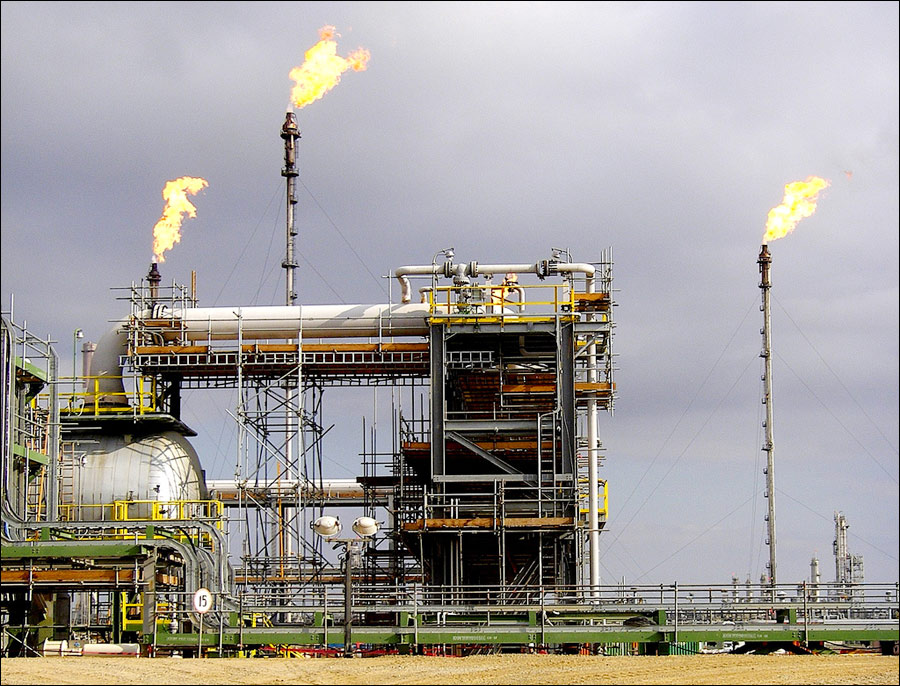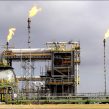
Kazakhstan Oil and Gas Output Rises Slightly in 2012
Publication: Eurasia Daily Monitor Volume: 10 Issue: 19
By:

On January 28, 2013, Kazakhstan’s Oil and Gas Ministry announced the country had exported 68.62 million tons of crude oil and condensed natural gas in 2012, a 3.3-percent rise over the 2011 figure. In 2013, Kazakhstan plans to produce 82 million tons of crude oil and 40.5 billion cubic meters (bcm) of condensed gas (Tengrinews, January 28).
Kazakhstan has projected oil reserves of 4.8 billion tons of oil, the second-largest oil reserves among the former Soviet republics after Russia. The country ranks 11th in the world in terms of proven oil reserves (US Energy Information Administration, “Kazakhstan,” September 18, 2012, https://www.eia.gov/countries/cab.cfm?fips=KZ). Drawing on these enormous reserves, Kazakhstan can keep producing at its current level of output for the next 60 years.
Oil production was 79.2 million tons in 2012. The government and the energy companies active in Kazakhstan had hoped for higher output, but production problems, particularly at the Tengiz field, a further delay in the start of production at the enormous Kashagan oil field, as well as railway and other transportation problems impeded oil output (Tengrinews, January 28).
Even so, Kazakhstan’s oil production has been steadily rising during the past two decades, especially since 2003, due to foreign investment and improvements in production efficiencies. Oil production exceeded 1.0 million barrels per day (bbl/d) in 2003. Kazakhstan is already the largest oil producer and exporter in Central Asia and the second-largest oil producer among the former Soviet republics after Russia. Its production and export of oil is expected to soar in coming years as the massive Kashagan oil field, located offshore in the Caspian Sea, continues to develop over the next few years (Energy Information Administration, “Kazakhstan,” September 18, 2012).
Most of the country’s top oil reserves are located in the western part of the country, including both offshore and onshore. At present, the country’s most productive oil fields are Tengiz (520,000 bbl/d), Karachaganak (250,000 bbl/d), Uzen (100,000 bbl/d), Aktobemunaigas (120,000 bbl/d), and Mangistau (115,000 bbl/d)). Yet, it is the Kashagan field, located in shallow waters of the Caspian, which has received the most media attention because it contains an estimated 13 billion barrels of recoverable reserves of oil, making it the largest oil discovery in the world during the past 30 years and the largest oil field outside the Middle East.
The country’s three oil refineries (at Pavlodar, Shymkent, and Atyrau) processed a total of 14.2 million tons of crude, a 3.6-percent increase from 2011 (Tengrinews, January 28). This figure may decrease in 2013 since the refineries are being closed while they undergo renovation. Attracting foreign investment in this sector has been difficult because domestic prices for refined products are low; investors would rather build facilities for export to benefit from the much higher world oil prices. Kazakhstan traditionally has imported gasoline and other refined petroleum products from Russia, but the government now also is planning to build a pipeline to send some of its oil to China for refinement (RIA Novosti, January 30).
Kazakhstan’s natural gas production and exports have also continued to rise. But most of this gas is associated with crude oil production, and some three-fourths of all the gas produced in Kazakhstan is re-injected into its associated oil fields to enhance their production. Kazakhstan’s gas production was 40.1 billion cubic meters (bcm) in 2012, up 1.5 percent from 2011. The volume of commercial gas remained at the 2011 level of 21.2 bcm. Domestic consumption of natural gas in 2012 amounted to 10.5 bcm, a 3.2-percent increase. Kazakhstan exported 8.8 bcm in 2012, a 3.7-percent rise over 2011. The amount of gas that was flared rather than re-injected into the oil wells was around 1 bcm in 2012 (Trend, January 28).
Kazakhstan has projected reserves of natural gas of between 6 trillion to 8 trillion cubic meters (tcm). The main bottleneck is Kazakhstan’s limited internal natural gas pipeline network. Most of Kazakhstan’s natural gas reserves are located in the west, concentrated in the four giant fields of Karachaganak, Tengiz, Imashevskoye and Kashagan. But the country’s population is located mainly in the north, east and south. Some of these regions actually import gas from neighboring Russia or Uzbekistan. In fact, most natural gas that flows through pipelines in Kazakhstan comes from and goes to other countries—Kazakhstan mainly serves as a transit country for gas exports from Uzbekistan and Turkmenistan that go to Russia and China. The amount of gas that transited Kazakhstan in 2012 was roughly the same as in 2011, some 96.5 bcm (Interfax, January 28). But this figure should rise in coming years with the planned expansion of the transit pipeline to China from its current capacity of 40 bcm per year to 65 bcm per year.
The government’s near-term priority is to develop its domestic gas pipeline system. From the longer-term perspective, the government would like to take advantage of the already extensive gas pipelines that transit Kazakhstan to export more of its domestic production. Through a joint venture with Gazprom called KazRosGas, Kazakhstan will market the gas produced at Karachaganak, only two-thirds of which are used domestically, to Russia (Oil and Gas Journal, October 22, 2012).
But the main gas prize is China, which has a potentially unlimited demand for imported natural gas from Central Asia. Both these objectives are being met with the construction of the 920-mile Beineu-Bozoi-Akbulak pipeline. When completed at the end of 2015, this pipeline, with a capacity of 28.3 million cubic meters, will connect the gas fields in western Kazakhstan to other regions of the country as well as allow exports to China by connecting with the Central Asia–China gas pipeline that starts in Turkmenistan and passes through Kazakhstan to Shymkent.
Thus far, the main source of Kazakhstan’s global influence has been its enormous oil resources and production. If present trends continue, Kazakhstan should soon realize its goal of rising to the ranks of the world’s top ten oil producers and exporters. Although the Kazakhstani government aims to diversify its energy sources as well as its sources of export income, the rising hydrocarbon production and exports should provide Astana with additional revenue to help facilitate that transition.




